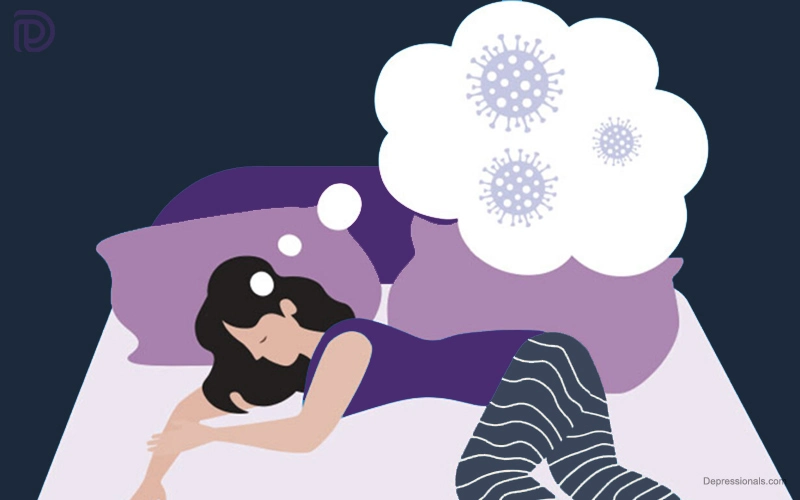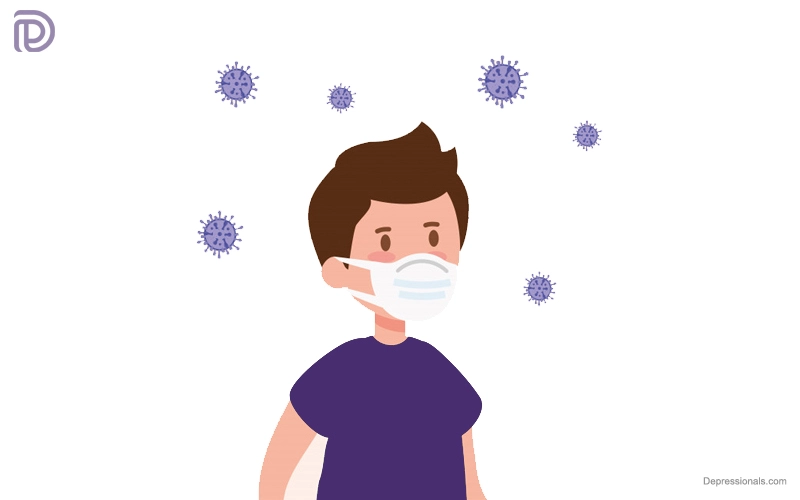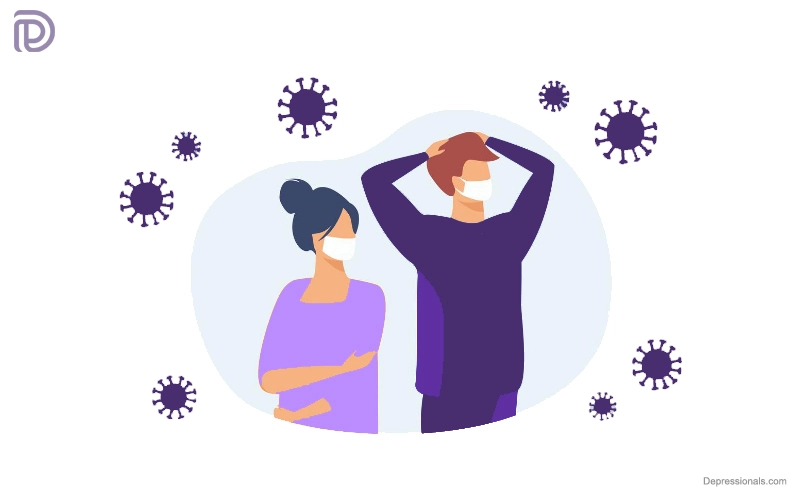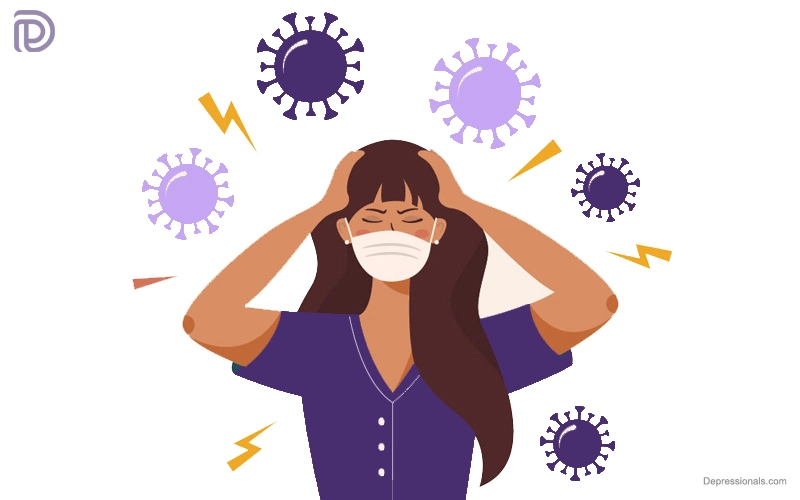Living in a COVID-19 world can feel like living in an alternate universe. We live within the same walls all day long. Food arrives in our homes and we are afraid to touch it. We wear masks when we enter the town and get anxious if someone does not wear one. People can’t be trusted. Living here is like dreaming. COVID-19 affects the worlds of our dreams too, such as how much we dream, how often we remember our dreams and the types of dreams we have. When stay-at-home directives went into effect widely in early 2020, society experienced an unforeseen “dream surge” in which vivid, bizarre dreams became the norm. Many of these were related to Coronavirus and social isolation. Facebook users have begun using terms like COVID nightmares, lockdown dreams, and coronavirus dreams. The message had been broadcast by mainstream and social media outlets by April of that year: the world is dreaming of COVID.
A surge of this magnitude had never previously been observed in the U.S. despite widespread changes in dreaming following extraordinary events such as 9/11 and the 1989 San Francisco earthquake. In the era of social media, where dreams are immediately accessible for immediate study, this upwelling of dreams is the first known to occur globally. This pandemic is unprecedented as a dream “event.”
However, what exactly is this phenomenon? And why is it happening in such a massive way? The COVID dreams survey was conducted online in the week of March 22, 2020, by Deirdre Barrett, assistant professor at Harvard Medical School and editor-in-chief of the journal Dreaming.
A group of researchers led by Elizaveta Solomonova, now a postdoctoral fellow at McGill University, and Rébecca Robillard, of the Royal Institute of Mental Health Research in Ottawa, carried out a community survey in which 968 people 12 and older from North America responded. Researchers document the sudden surge of dreams, a wide variety of dreams, as well as many factors related to mental health in a paper published in December 2020.
Berkeley’s three-day poll found that 29 percent of Americans had more dreams than usual in March 2020. Researchers Solomonova and Robillard found that 37 percent of people dreamed about pandemics and that many of them included themes of insufficient task completion (losing control of a vehicle for example) and being threatened. The findings were reflected in a number of posts from the time on the Internet.
There has been a qualitative change in dream emotional content and health concerns in more recent research. Words related to anger, sadness, contamination, and cleanliness appeared frequently in dream reports from Brazilian adults who are socially isolated. Studying the text of 810 Finnish dreams revealed that most of the clustered words were anxious; 55 percent of the clusters were directly related to the pandemic (short-sightedness, elderly people in distress), and these emotions were more common among people who were stressed during the day. There was no major difference in the rates of nightmares experienced by nurses treated with COVID in Wuhan, China, compared to Chinese psychiatric outpatients, but the rates were twice as high as the 5 percent or so of the general population who suffer nightmares.
This unprecedented opening of the oneiric floodgates was likely caused by some basic biological and social dynamics. It may have been triggered or sustained by at least three factors: disrupted sleep schedules, which may have induced REM sleep and consequently dreaming; the threat of contagion and social distance, which may have stressed dreaming’s ability to regulate emotions; and major media outlets amplifying the public’s reaction.
Related: Corona Virus (COVID-19) Effects on Brain
Better REM sleep, Better dreams in Covid 19
The sudden change in sleep patterns when lockdowns were implemented could be one explanation for the spike. The Chinese population, especially frontline workers, suffers from insomnia at high rates, according to early publications. People who work at home have more time for sleep since they do not have to commute to work. China respondents reported sleeping an extra 34 minutes a night and increasing bedtime by 46 minutes on average. More than half of the Finnish population said that COVID-19 affects our dreams, they slept better after a lockdown. The time spent sleeping in the U.S. increased by almost 20 percent from March 13 to 27, 2020. States with the longest commutes, such as Maryland and New Jersey, saw the largest increases.
Sleeping for more than 9.5 hours produces more dreams than sleeping for eight hours. Sleep scientists have found that more dreams are recalled by people after a long slumber. Sleeping longer leads to more vivid and emotional dreams, as REM sleep is when the dreams are most vivid.
Dreaming may also have occurred later than usual because schedules were relaxed, which means more REM sleep occurred, which leads to stranger dreams. It is due to a convergence of several processes that late-morning REM dreams are more likely. A sleep cycle cycles from deep to light sleep every 90 minutes, but as the need for deep, recuperative sleep increases, the pressure for REM sleep gradually increases. While at the same time, a circadian process closely related to our 24-hour core body temperature rhythm triggers an increase in REM sleep propensity that lasts all through the morning.
Many people slept later and longer after the pandemic began. Throughout China, bedtime is usually delayed by 26 minutes, but waking up time is generally delayed by 72 minutes. The Italian value was 41 minutes, while the U.S. value was 30 minutes, and the Italian value was 73 minutes, that’s how COVID-19 affects our dreams. Many people were able to sleep longer and remember their dreams without commutes. The former early birds may have become night owls, who typically sleep more deeply and have nightmares more frequently. After eliminating sleep debts accumulated over days or even weeks of insufficient sleep, people were more likely to remember their dreams when they awoke in the morning.
Related: COVID-19 Stress
Overwhelmed by dream functions
COVID dreams typically deal with themes of contagion and social distancing directly or metaphorically. Dreams about novel experiences are common during normal times. Those who enroll in programs to learn French quickly dream of having a better grasp of the language. COVID-19 affects our dreams so we use REM sleep and dreaming to solve problems by replaying fragments of our experiences. Researchers widely attribute this function to REM sleep. The brain plays several other roles, such as tying each day’s events into a continuing narrative of our lives and helping us cope with emotions.
It has been documented that dreams assist in creative achievement in countless cases. Furthermore, empirical studies have shown that REM sleep is beneficial for assisting problem-solving that requires the use of a wide range of memories, which might explain why COVID-19 affects our dreams in the 2020 surge center. During the survey, one respondent said, “I am seeking either a cream that can prevent or cure Covid-19… I ended up getting the last bottle.”
Extinguishing fearful memories and simulating social situations are two other widely claimed dreams functions. Surge dreams often include threats such as pandemics and challenges such as social distances as they relate to emotion regulation.
It might help to view direct and metaphoric imagery as expressions of a person’s core concerns, revealing emotions and subjects that are similar in emotional tone but different in content. It is clear from post-traumatic nightmares that an individual’s reaction to trauma, such as terror after a violent assault, is expressed as terror in response to a natural disaster. During the 9/11 attacks, Boston-area dream researcher Ernest Hartmann, who pioneered dreams and nightmare research, stated that contextualization can help people adapt best when it combines old and new experiences. Integrated memory systems are more resilient to future trauma because they are stable.
Making sense of disruptive events can be aided by metaphorical images.
Nevertheless, severe trauma can lead to a breakdown of this mechanism. When COVID-19 affects our dreams, the fearful memory plays out in nightmares in a realistic manner, and the creative process of recombining memory elements is interrupted. Traumatic impact and resilience will determine the ultimate impact of the pandemic on a person’s dreams.
An additional class of theories is still speculation but may explain the themes of social distancing prevalent. This type of dream is characterized by a wide range of emotions, from surprise to discomfort to stress to nightmares.
Dreaming is seen as a form of social simulation in these theories. Dreaming is now widely regarded as a neural simulation of reality, distinct from virtual reality, and the simulation of social life is perceived as an essential aspect of the brain. I proposed in 2000 that images of characters interacting with the self in dreams reflect attachment relationships essential for the survival of prehistoric groups, says Anne Germain, the founder of the sleep medicine company Noctem.
Through dreams, interpersonal bonds are reinforced, which contributes to a stronger group structure, which makes it easier to defend against predators and resolve problems jointly. Families and groups continue to be essential for survival and health today, and such dreams would still have value. When individuals are presented with simulated situations with other people, their concerns about them may be fine-tuned. When people dream, they experience important social relationships and conflicts realistically.
Researchers have since proposed additional social functions for dreaming – such as the practice of social bonding/perception as well as social mind-reading and social perception (Who is around me?, Does COVID-19 affects our dreams?) by cognitive neuroscientist Antti Revonsuo of the University of Turku in Finland and the University of Skövde in Sweden. Psychologists Mark Blagrove and Andrew Webster postulate that sharing dreams enhances empathy for others. Our understanding of dream functions will likely expand as we discover more about the brain circuits underneath social cognition and how REM sleep influences memories of emotions, faces, and reactions to social exclusion.
Since social isolation at a level never before seen is, in essence, an experiment in social isolation at a level that is likely antagonizing to human evolution, this should lead to a massive clash with dream mechanisms rooted deep within the mind. A social simulation in dreams can play a crucial role in supporting families, groups, and even societies as they cope with sudden, widespread social adaptation when social distancing disrupts normal relationships so profoundly-causing individuals to spend excessive amounts of time with some people and no time with others.
Related: How to Stop Worrying About COVID-19
Socialism and the edge chamber
There is one important question about pandemic dreams we would like to clarify: was the dream surge boosted by the media? Several early posts about dreams were shared widely online and fed a narrative about pandemic dreams that became viral, encouraging people to share their dreams and notice COVID themes. People may have dreamed more about the pandemic as a result of this narrative.
The format of most early stories almost guaranteed amplification: they typically described some salient dream themes observed in a survey and provided a link directing readers to participate in the same survey. In addition, 56 percent of articles during the first week of stories featured interviews with the same Harvard dream scientist, which may have influenced readers to dream about themes repeated by her.
Some people may need the help of a therapist. This article does not provide any details about nightmares based on survey results. Others experienced recurrent nightmares after witnessing relentless suffering. There are also reports of ICU patients experiencing nightmares during their stay, possibly triggered by sedatives, sleep deprivation due to round-the-clock hospital procedures, and interminable monitor noises. Sleep will not return to normal for these survivors unless they receive expert assistance. Fortunately, specialized techniques can be highly effective.
COVID dreams are also available to those who have not been traumatized but are still a little freaked out about them.
Innovative technologies provide individuals with greater control over their dream narratives such as targeted memory reactivation. You might be able to transform worrisome pandemic dreams into more pleasant, maybe even useful dreams, if, for example, you learn how to practice lucid dreaming while targeted memory reactivation helps you become aware you’re dreaming.
We can allow ourselves to relax and enjoy putting away those surplus sleep hours without seeking therapy. The dream can be frustrating, but it can also be impressionable, malleable, and inspiring in the right circumstances.






fantastic points altogether, you just gained a brand new reader. What would you recommend in regards to your post that you made some days ago? Any positive?
Hello, i think that i saw you visited my weblog thus i came to go back the desire? I’m trying to find things to improve my website!I suppose its adequate to make use of some of your ideas!!
When I originally commented I clicked the -Notify me when new feedback are added- checkbox and now every time a remark is added I get 4 emails with the same comment. Is there any manner you possibly can take away me from that service? Thanks!
Hi there! Nice material, do keep me posted when you post something like this again! I will visit this blog leaps and bounds for more quality posts like it. Thanks…
Hello.This post was really fascinating, especially because I was looking for thoughts on this issue last Saturday.
Good site! I truly love how it is easy on my eyes and the data are well written. I am wondering how I could be notified when a new post has been made. I have subscribed to your RSS which must do the trick! Have a nice day!
The information you have provided is very useful to me.